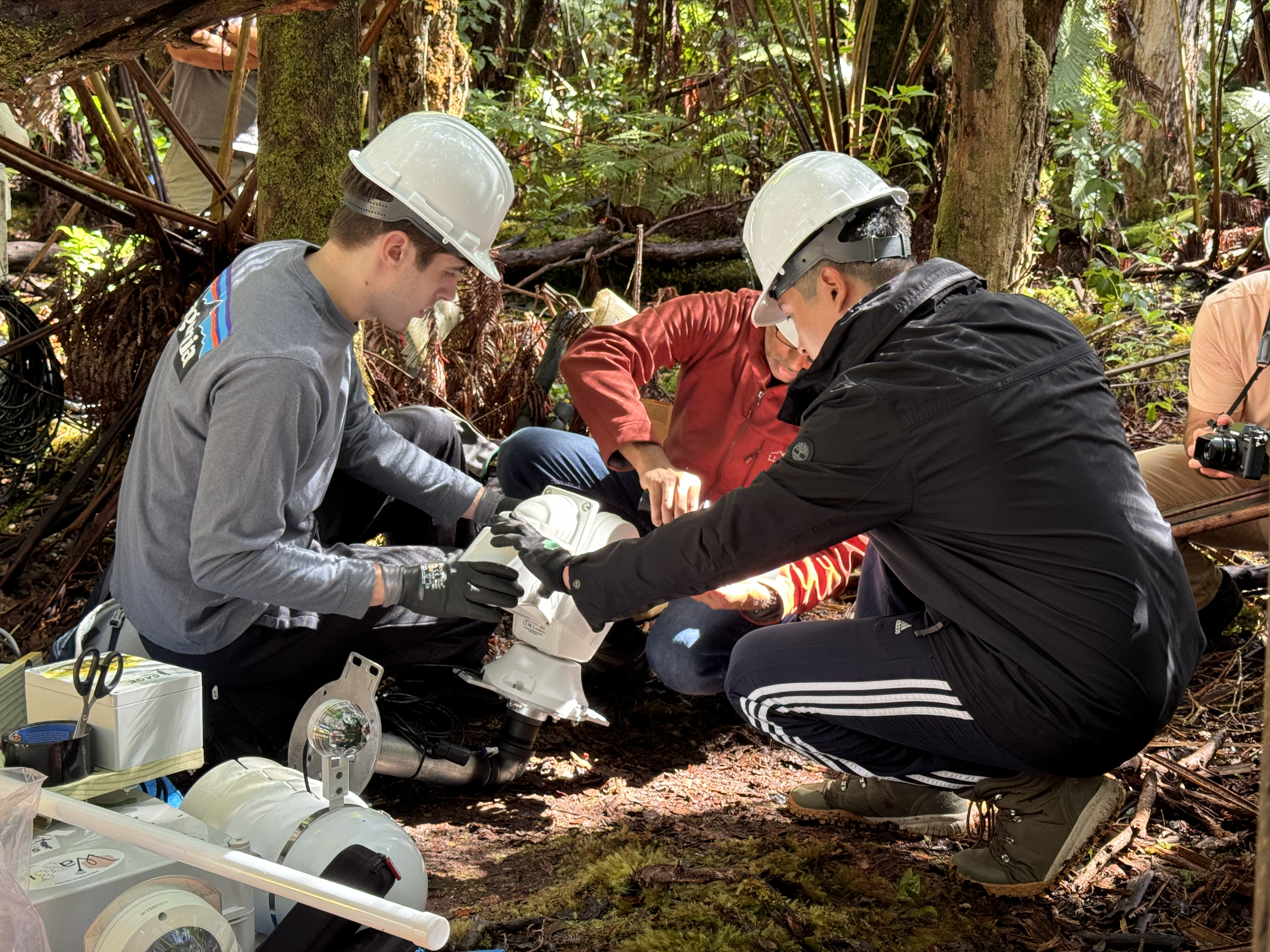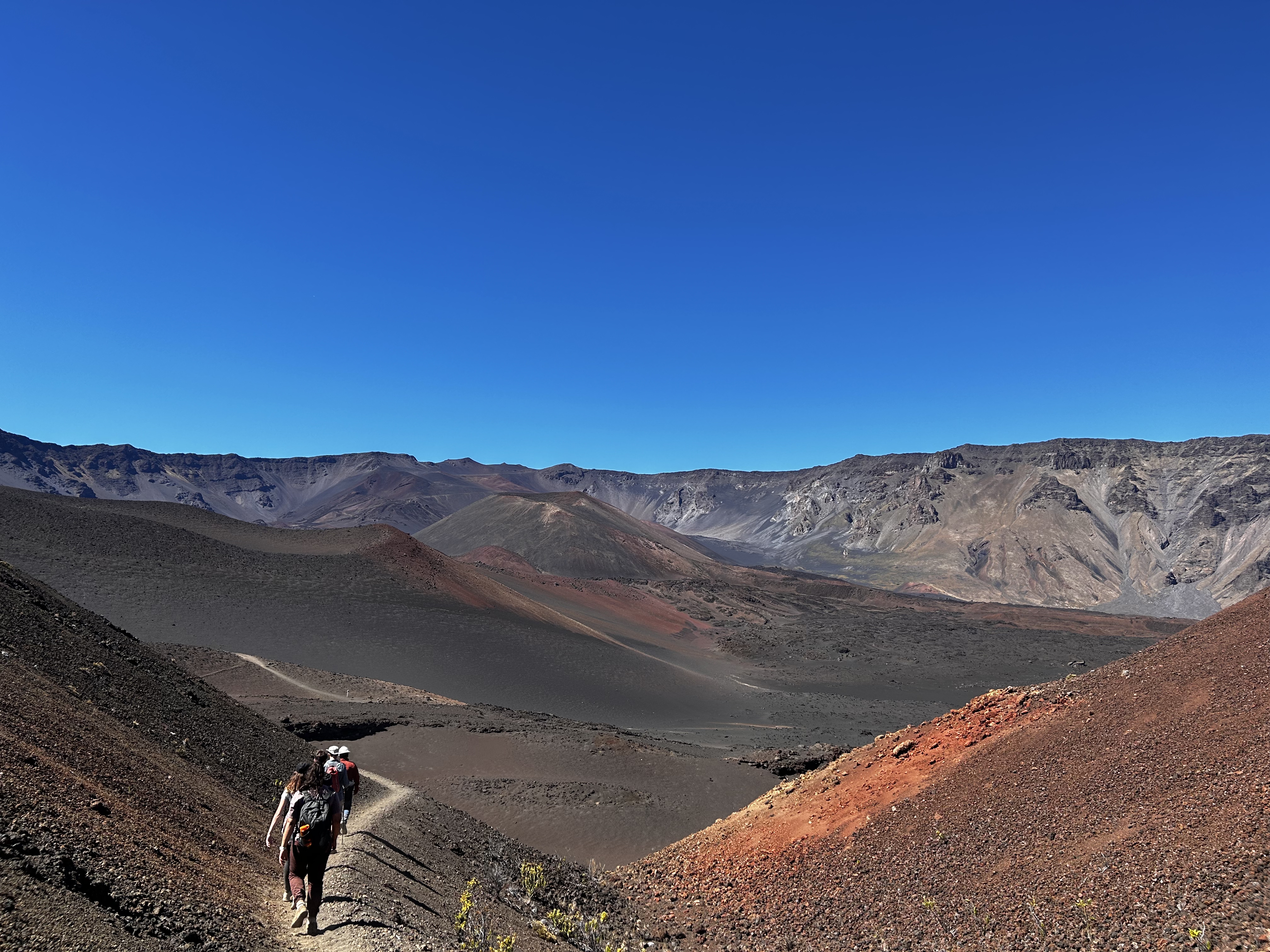Serving the Hawaiian Community with Sage Nodes
Hello, my name is Aldo. I study computer science at the University of Chicago, and I've worked with Argonne National Laboratory since June 2021. My research involves wireless sensors and integrating the Sage infrastructure with low-cost nodes.
There aren't many employers that fly out their interns to tropical islands. But that's why Argonne National Lab is so incredible! This last week, I learned what it means to be a computer scientist that helps people. My biggest dilemma with applying to graduate school has been figuring out how I'd positively impact people's lives with my research. Argonne allowed me to see exactly that on this trip. I saw how lab work leads to applicable instrumentation, which allows different scientists to answer their research questions to help people. And it was incredible to see people so passionate about their work.

Meeting Derek Esibill and his son Kai in O'ahu taught me that science is beautiful. It was clear from the beginning they both care deeply about Hawaiian culture and its people. Derek's research aims to restore the traditional ways of aquaculture to support the growing needs of Hawaii. He uses sensors to track the flow of fish and to study the composition of the pond water. We visited the pond to explore how Sage can introduce wireless sensors to facilitate the process of data gathering. I saw how my research on wireless sensors could help other scientists to answer questions relating to food sustainability. To me, that means a lot because it revealed to me how remote lab research translates directly to helping people across the world. And in return, hopefully, restore the tradition of cultivating food in Hawaii.

Another insightful moment was when we went up to the water tower in Lahaina. As a computer scientist, you don't learn about the social aspect of using your research for the betterment of society, so before the trip, I saw computer science research unrelated to social impact. The Sage project is special because apart from the interdisciplinary work to answer climate and ecological questions, the scientists on the team also care about the people they work to help. For example, it's important to make scientific data and discovery more digestible for the people in Lahaina to provide insight to their questions, and computer science visualization techniques do exactly that. It's also important to be sensible to community needs with the research questions to ask and prioritize. Again, I saw how my research could help on-the-field scientists surveil the land and skies with greater efficiency, allowing for quicker answers to pending questions.

I'm forever thankful for this opportunity to not only hike above the clouds and swim in the Pacific Ocean but to meet scientists and understand their motivation behind discovery. Their insights helped me understand that computer science can directly help people through collaboration with other scientists and providing better data collection. I know now that lab work doesn't have to stay just in the lab but can be used in real-life situations to help people, as long as there's an understanding between the scientists and communities. Thank you again to all the team members from Illinois and Hawaii for sharing their experiences.